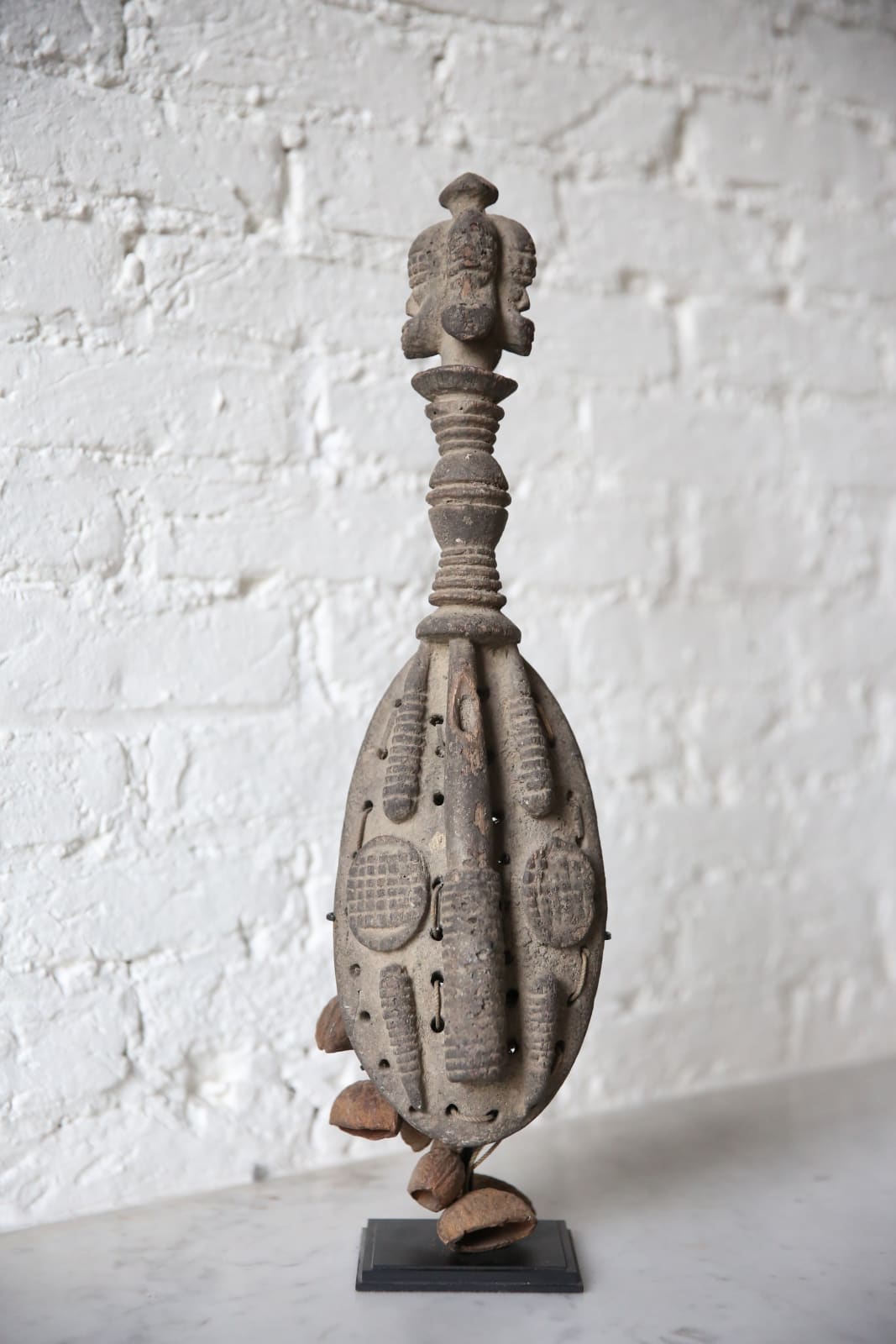Anonymous Isoko or Urhobo artist
Early 20th century
Wood, fibers, nut shells
height 16 1/8 in
Further images
This rare rattle can be attributed to either the Isoko or Urhobo peoples living in Nigeria’s Niger Delta. It is crowned by four stylized heads in a style reminiscent of the anthropomorphic sculptures of both cultures. Each head looking in a different direction, this iconographic detail references the spirits’ ability to see everything at once. A delicate handle connects the heads with the oval-shaped pierced rattle. Numerous halved nut shells are attached to the rattle to create hypnotic sounds when the instrument was shaken. The oval rattle board features the representation of several ritual objects that would be owned by an important titleholder, suggesting this rattle was also part of his insignia. Besides a trumpet, placed centrally with the blowhole clearly carved, we can identify two stylized bowls and four cylindrical ofo ritual objects. As discussed in our essay on the Igbo ofo in the present catalog, all people living in the Niger Delta and Riverain areas, i.e. the Isoko, Urhobo, Igbo, and Ijo, venerated the ofo tree (Detarium senegalense) and its unique branches, but they all found different ways by which to represent this sacred tree for political and religious purposes. Symbolizing the ancestors, ofo derived originally from the tree of the same name that grows throughout southern Nigeria. All these cultures kept bundles of the sacred tree’s twigs in their ancestral shrines, often wrapped in cloth or copper alloy wires, as shown on this rattle. Such an ofo was the most important representation of the ancestors in southern Nigeria, and used for daily prayers, ancestral veneration, and oath-taking. Its repeated presence on this rare musical instrument gives an indication to the possible ritual contexts in which it once was employed.
Provenance
Private Collection, The NetherlandsDuende Art Projects, Antwerp, Belgium, 2022









